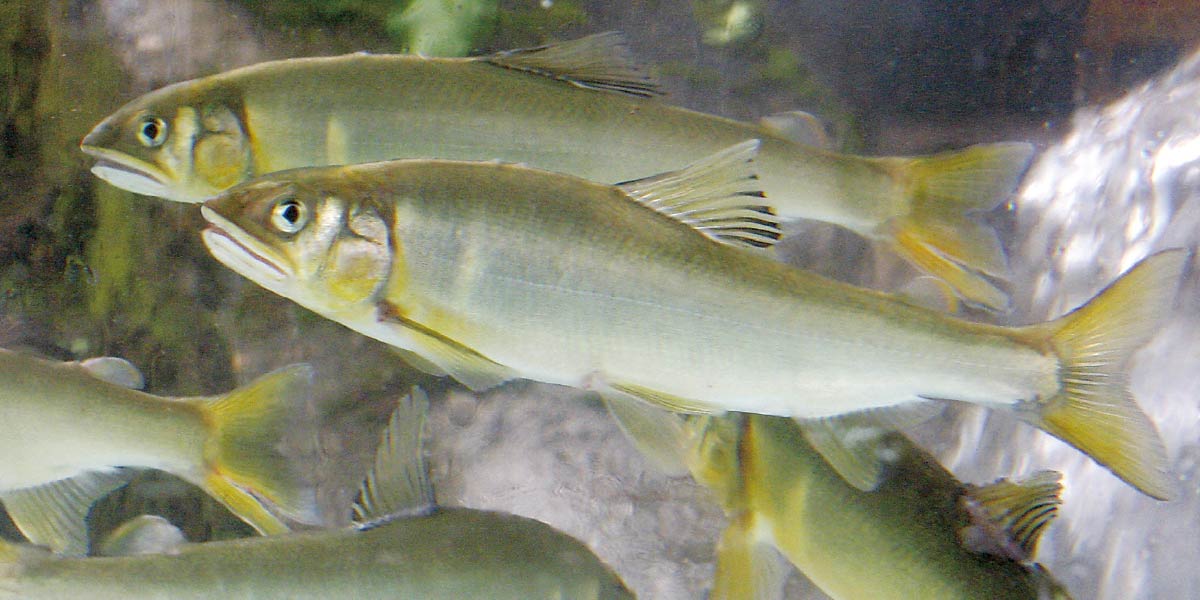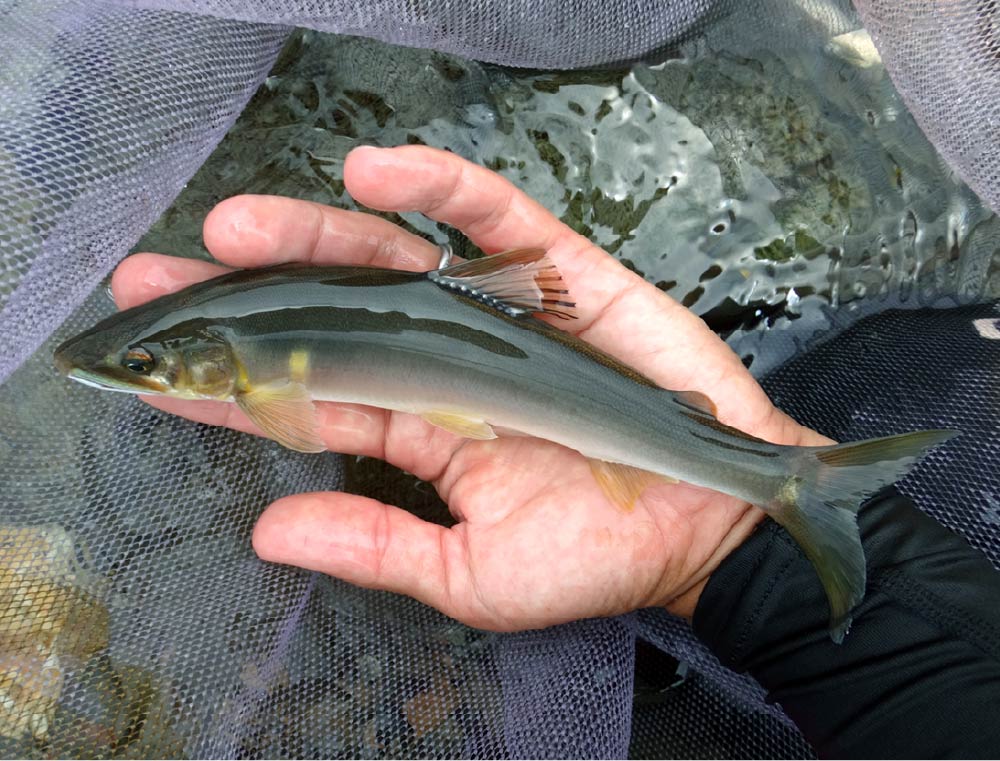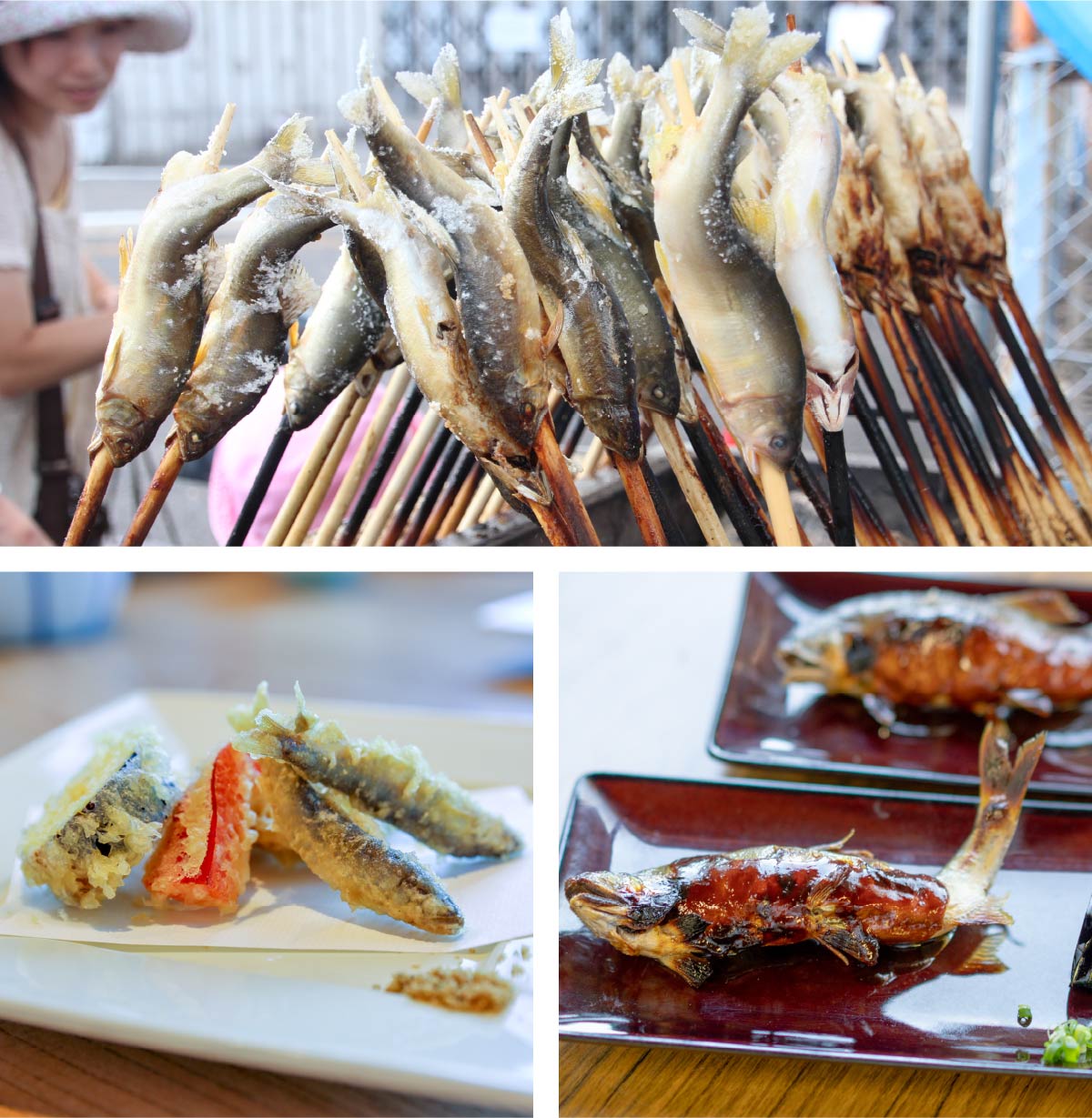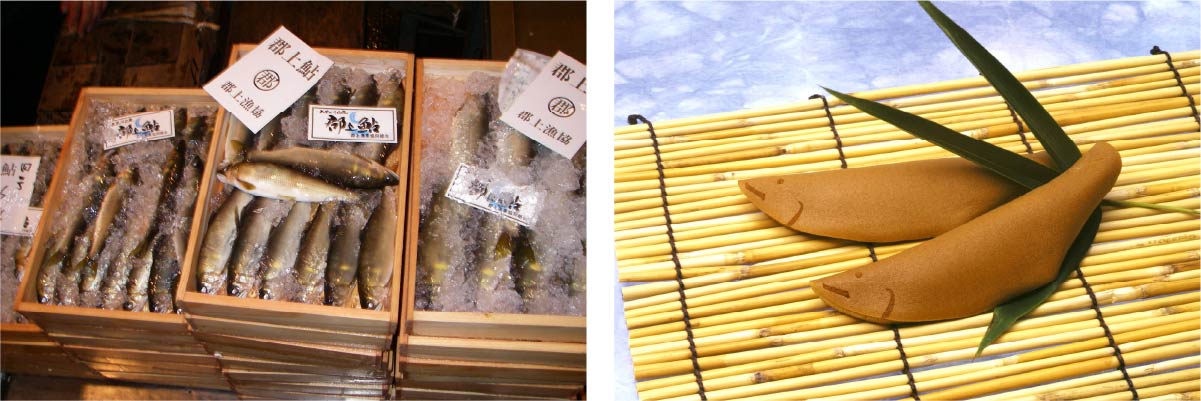GIAHS “Ayu of the Nagara River System”
- About Nagara River
- Well-loved Ayu Fish
- Various Creatures Living in the Clear Stream
- River Fisherman
- People's lives nurtured by the river
- The Future of Forests, Rivers and People
-
GIAHS “Ayu of the Nagara River System”
Well-loved Ayu Fish
The Nagara River is a popular river fishery spot, especially for ayu.
Cormorant fishing, which is popular among tourists, is also a part of ayu fishing. The Nagara River's ayu is a "taste of Gifu," as evidenced by ayu sushi and Japanese sweets in the shape of ayu.
Thanks to the clear waters of the Nagara River, some of Japan's most delicious ayu fish can be grown.

Ayu fish, a symbol of the clear Nagara River
Ayu fish is said to be a symbol of a clear river. In order for ayu to grow well, it needs high-quality moss (algae) as food. If the sunlight reaches the stones where moss (algae) grows, moss (algae) will grow abundantly, but if it is blocked by mud, fallen leaves and other debris, moss (algae) will not grow well. The Nagara River does not have any dams (more than 15 meters high as defined by the River Law) in its mainstream, so the riverbed is easily washed naturally by heavy rains. Ayu fish are big eaters, eating bait weighing half their own body weight per day. The reason why ayu make territories is to protect their feeding grounds from other ayu. In order to have a large number of ayu living in a river, it is necessary to have an extensive and beautiful river.
The moss on the bottom of the river absorbs carbon dioxide, nitrogen and phosphorus from the water and cleans the water. As ayu eat the moss, new moss will grow one after another and continue to clean the water. What would happen if there were no ayu in the Nagara River? The moss that is left uneaten will not grow any more and will rot and pollute the water. Ayu fish also help to keep the water clean.
Ayu has been loved by Japanese people since ancient times, as there are descriptions of fishing for ayu in the Kojiki and Manyoshu. The Nagara River is designated as a fishing ground by the Imperial Household Agency, and the ayu caught by cormorants are delivered to the Imperial Family and the Ise Shrine.

Ayu fish live only one year
Ayu is a migratory fish that moves back and forth between the sea and rivers
Autumn...The hatched fry flow to the mouth of the river and go out to sea.
Winter...They stay in the sea and grow up by eating zooplankton in the surf.
Spring...They migrate upstream in schools to the middle to upper reaches of the river (young fry).
Summer...Establish a territory and grow up.
Autumn... The ayu descends from the river (fallen ayu) and ends its life after spawning in the middle reaches of the river..
It is called an "annual fish" because it lives for only one year.

When is the best season to eat ayu fish?
Ayu fish grows throughout the year, so you can enjoy different flavors depending on the season.
It is a good idea to compare the tastes in the different seasons to find the one you like best.
On the Nagara River, the ayu fishing season starts between mid-May and June and ends at the end of December.
The cormorant fishing season begins at the same period.
June to early July
Young ayu (12 to 15 cm in length) have soft flesh. You can enjoy the fresh flavor of the ayu before all the fat has been added. Tempura is recommended, as you can eat the whole thing from head to bone.
Mid-July to mid-August
Ayu fish that have grown to about 20 cm in length are the richest in fat and have an aroma like that of watermelon. The best way to enjoy the aroma is to simply grill it with salt.
Late August - October
The ayu is on its way down the river to spawn, so it has lots of tiny roes in its body. It is recommended to eat the ayu stewed in a syrup or dengaku, ayu flavored by miso (soybean paste), where you can enjoy both the meat and the roes.
There are sightseeing “Yanas” along the Nagara River where you can enjoy ayu course meals and catching ayu fish (age and climate restrictions applied). Yana is a fishing method in which a "yana, large fixtures of slatted wood, is set up in the river to catch fish that jump in with the current.

Japanese sweets in the shape of ayu and processed ayu products are also popular
The Nagara River cormorant fishing has been loved and protected by warlords and cultural figures since ancient times because of the beauty of the scene and the taste of ayu fish. Tokugawa Ieyasu loved the taste of the fish so much that he had ayu sushi delivered from Gifu as far as to Edo(Tokyo) several times a year.
As a result, many of Gifu's specialties feature ayu. In addition to processed products such as ayu rolled with kelp, there is also “ayu gashi” confectionary in the shape of ayu.
The GIAHS "Blessings of the Clear Waters of the Nagara River" also introduces such souvenirs.

